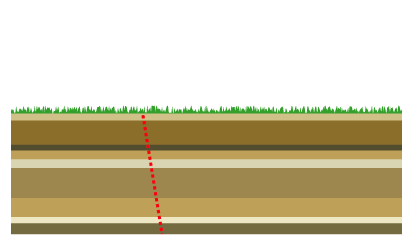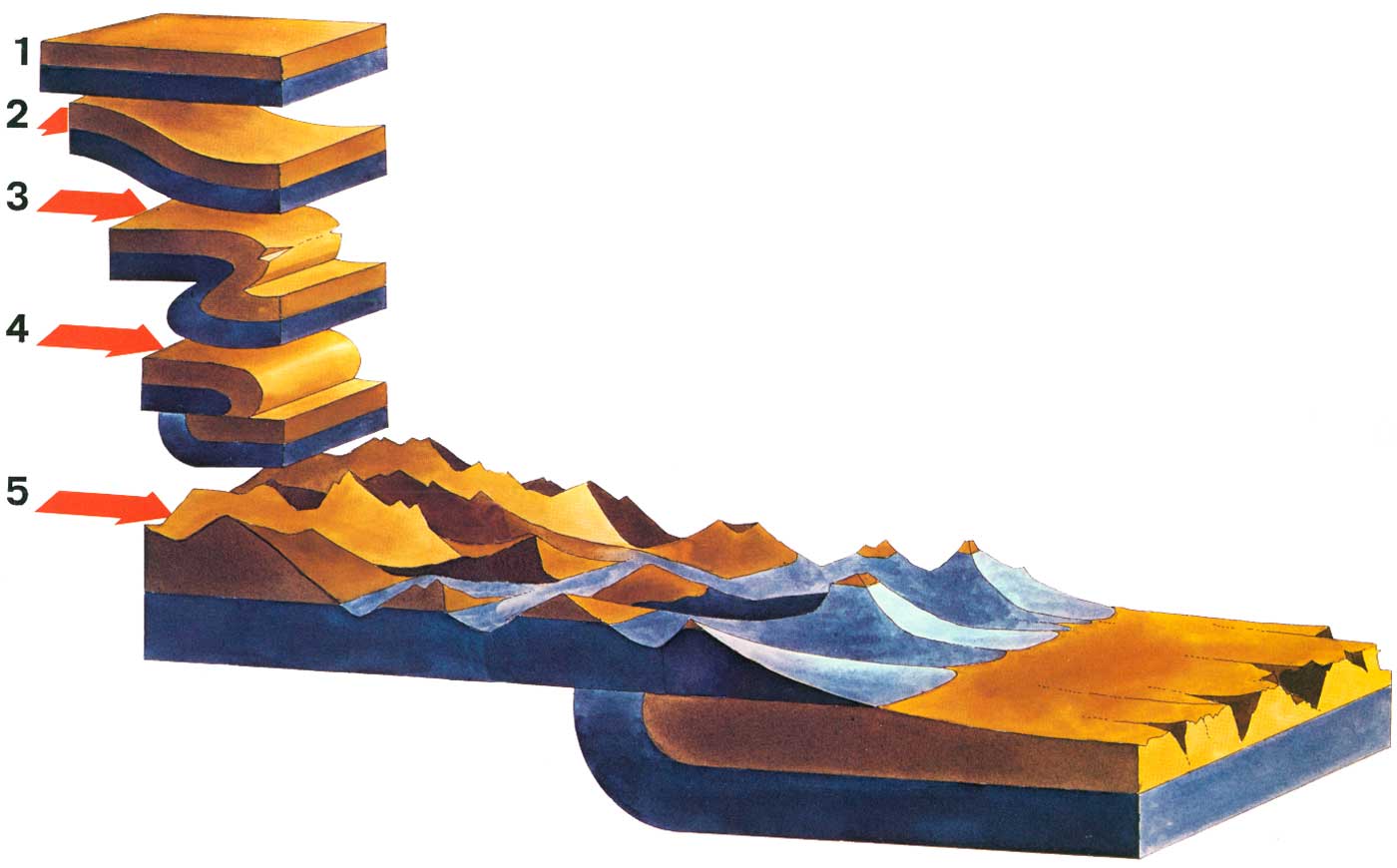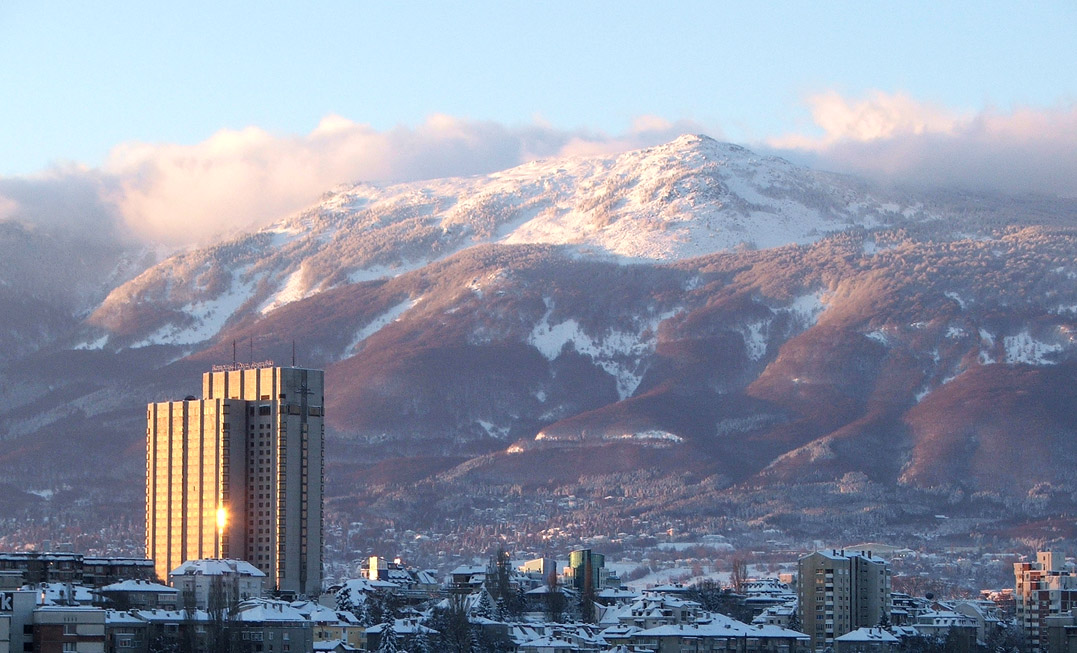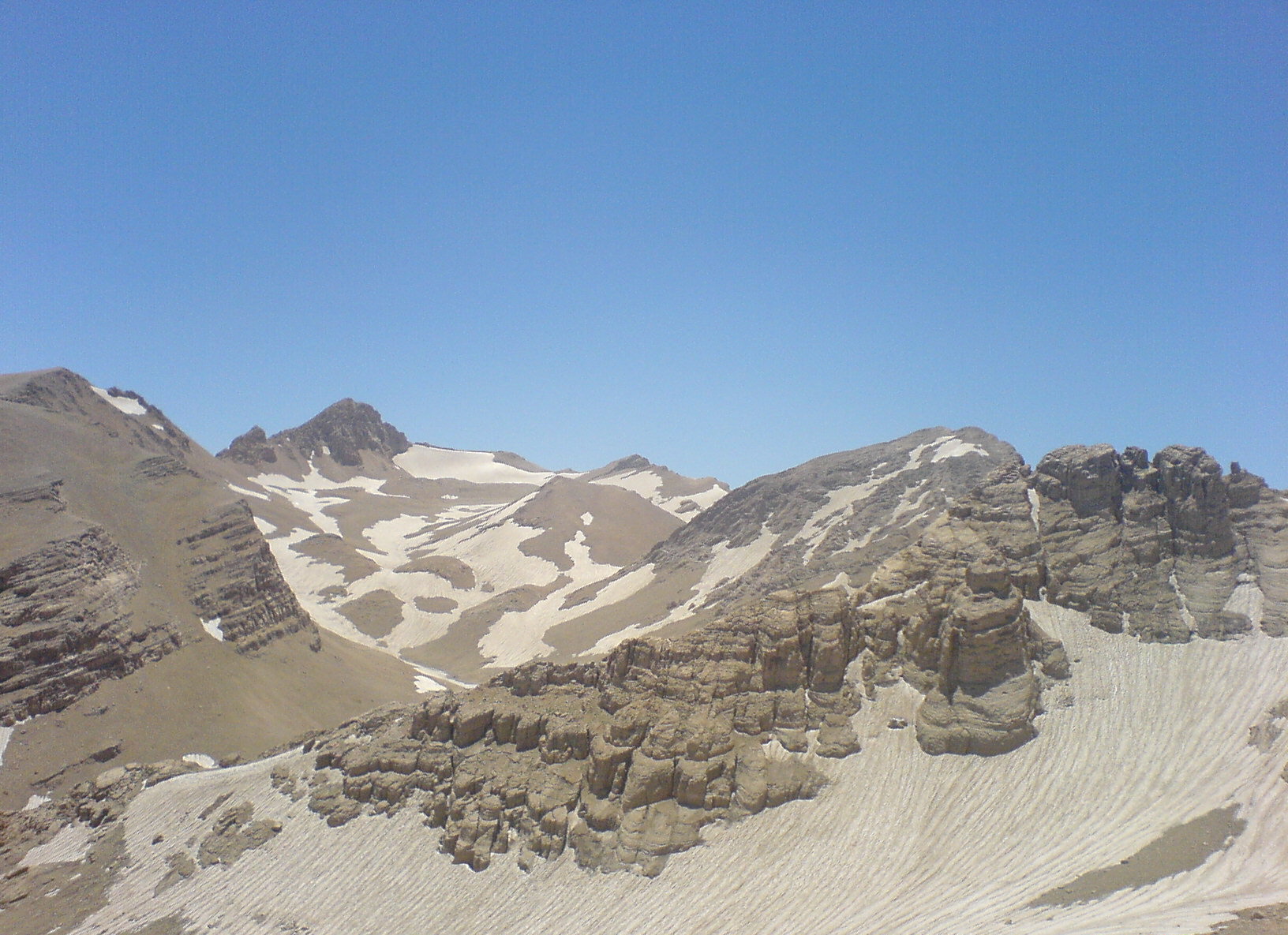mountain formation on:
[Wikipedia]
[Google]
[Amazon]

 Mountain formation occurs due to a variety of geological processes associated with large-scale movements of the
Mountain formation occurs due to a variety of geological processes associated with large-scale movements of the
 Movements of tectonic plates create
Movements of tectonic plates create  Most volcanoes occur in a band encircling the Pacific Ocean (the Pacific Ring of Fire), and in another that extends from the Mediterranean across Asia to join the Pacific band in the Indonesian Archipelago. The most important types of volcanic mountain are ''composite cones'' or '' stratovolcanoes'' and '' shield volcanoes''.
A shield volcano has a gently sloping cone because of the low viscosity of the emitted material, primarily
Most volcanoes occur in a band encircling the Pacific Ocean (the Pacific Ring of Fire), and in another that extends from the Mediterranean across Asia to join the Pacific band in the Indonesian Archipelago. The most important types of volcanic mountain are ''composite cones'' or '' stratovolcanoes'' and '' shield volcanoes''.
A shield volcano has a gently sloping cone because of the low viscosity of the emitted material, primarily
 When plates collide or undergo subduction (that is, ride one over another), the plates tend to buckle and fold, forming mountains. While volcanic arcs form at oceanic-continental plate boundaries, folding occurs at continental-continental plate boundaries. Most of the major continental mountain ranges are associated with thrusting and folding or orogenesis. Examples are the
When plates collide or undergo subduction (that is, ride one over another), the plates tend to buckle and fold, forming mountains. While volcanic arcs form at oceanic-continental plate boundaries, folding occurs at continental-continental plate boundaries. Most of the major continental mountain ranges are associated with thrusting and folding or orogenesis. Examples are the

 When a
When a
NASA Goddard Planetary Geodynamics Laboratory
* ttps://web.archive.org/web/20100210000748/http://projects.crustal.ucsb.edu/understanding/globe/globe.html Rotating globe showing areas of earthquake activity {{Tectonic plates . . Geological processes Plate tectonics

 Mountain formation occurs due to a variety of geological processes associated with large-scale movements of the
Mountain formation occurs due to a variety of geological processes associated with large-scale movements of the Earth's crust
Earth's crust is its thick outer shell of rock, referring to less than one percent of the planet's radius and volume. It is the top component of the lithosphere, a solidified division of Earth's layers that includes the crust and the upper ...
( tectonic plates). Folding, faulting, volcanic activity, igneous intrusion
In geology, an igneous intrusion (or intrusive body or simply intrusion) is a body of intrusive igneous rock that forms by crystallization of magma slowly cooling below the surface of the Earth. Intrusions have a wide variety of forms and com ...
and metamorphism
Metamorphism is the transformation of existing Rock (geology), rock (the protolith) to rock with a different mineral composition or Texture (geology), texture. Metamorphism takes place at temperatures in excess of , and often also at elevated ...
can all be parts of the orogenic process of mountain
A mountain is an elevated portion of the Earth's crust, generally with steep sides that show significant exposed bedrock. Although definitions vary, a mountain may differ from a plateau in having a limited summit area, and is usually higher t ...
building. The formation of mountains is not necessarily related to the geological structures found on it.
From the late 18th century until its replacement by plate tectonics
Plate tectonics (, ) is the scientific theory that the Earth's lithosphere comprises a number of large tectonic plates, which have been slowly moving since 3–4 billion years ago. The model builds on the concept of , an idea developed durin ...
in the 1960s, geosyncline theory was used to explain much mountain-building. The understanding of specific landscape features in terms of the underlying tectonic
Tectonics ( via Latin ) are the processes that result in the structure and properties of the Earth's crust and its evolution through time. The field of ''planetary tectonics'' extends the concept to other planets and moons.
These processes ...
processes is called '' tectonic geomorphology'', and the study of geologically young or ongoing processes is called '' neotectonics''.
Types of mountains
There are five main types of mountains: volcanic, fold, plateau, fault-block, and dome. A more detailed classification useful on a local scale predatesplate tectonics
Plate tectonics (, ) is the scientific theory that the Earth's lithosphere comprises a number of large tectonic plates, which have been slowly moving since 3–4 billion years ago. The model builds on the concept of , an idea developed durin ...
and adds to these categories.
Volcanic mountains
 Movements of tectonic plates create
Movements of tectonic plates create volcano
A volcano is commonly defined as a vent or fissure in the crust of a planetary-mass object, such as Earth, that allows hot lava, volcanic ash, and gases to escape from a magma chamber below the surface.
On Earth, volcanoes are most oft ...
es along the plate boundaries, which erupt and form mountains. A ''volcanic arc system'' is a series of volcanoes that form near a subduction zone where the crust of a sinking oceanic plate melts and drags water down with the subducting crust.
 Most volcanoes occur in a band encircling the Pacific Ocean (the Pacific Ring of Fire), and in another that extends from the Mediterranean across Asia to join the Pacific band in the Indonesian Archipelago. The most important types of volcanic mountain are ''composite cones'' or '' stratovolcanoes'' and '' shield volcanoes''.
A shield volcano has a gently sloping cone because of the low viscosity of the emitted material, primarily
Most volcanoes occur in a band encircling the Pacific Ocean (the Pacific Ring of Fire), and in another that extends from the Mediterranean across Asia to join the Pacific band in the Indonesian Archipelago. The most important types of volcanic mountain are ''composite cones'' or '' stratovolcanoes'' and '' shield volcanoes''.
A shield volcano has a gently sloping cone because of the low viscosity of the emitted material, primarily basalt
Basalt (; ) is an aphanite, aphanitic (fine-grained) extrusive igneous rock formed from the rapid cooling of low-viscosity lava rich in magnesium and iron (mafic lava) exposed at or very near the planetary surface, surface of a terrestrial ...
. Mauna Loa is the classic example, with a slope of 4°-6°. (The relation between slope and viscosity falls under the topic of angle of repose.) A composite volcano or stratovolcano has a more steeply rising cone (33°-40°), because of the higher viscosity of the emitted material, and eruptions are more violent and less frequent than for shield volcanoes. Examples include Vesuvius
Mount Vesuvius ( ) is a Somma volcano, somma–stratovolcano located on the Gulf of Naples in Campania, Italy, about east of Naples and a short distance from the shore. It is one of several volcanoes forming the Campanian volcanic arc. Vesuv ...
, Kilimanjaro, Mount Fuji
is an active stratovolcano located on the Japanese island of Honshu, with a summit elevation of . It is the highest mountain in Japan, the second-highest volcano on any Asian island (after Mount Kerinci on the Indonesian island of Sumatra), a ...
, Mount Shasta
Mount Shasta ( ; Shasta people, Shasta: ''Waka-nunee-Tuki-wuki''; Karuk language, Karuk: ''Úytaahkoo'') is a Volcano#Volcanic activity, potentially active stratovolcano at the southern end of the Cascade Range in Siskiyou County, California. A ...
, Mount Hood
Mount Hood, also known as Wy'east, is an active stratovolcano in the Cascade Range and is a member of the Cascade Volcanic Arc. It was formed by a subduction zone on the West Coast of the United States, Pacific Coast and rests in the Pacific N ...
and Mount Rainier
Mount Rainier ( ), also known as Tahoma, is a large active stratovolcano in the Cascade Range of the Pacific Northwest in the United States. The mountain is located in Mount Rainier National Park about south-southeast of Seattle. With an off ...
.
Fold mountains
Balkan Mountains
The Balkan mountain range is located in the eastern part of the Balkan peninsula in Southeast Europe, Southeastern Europe. It is conventionally taken to begin at the peak of Vrashka Chuka on the border between Bulgaria and Serbia. It then runs f ...
, the Jura and the Zagros mountains.
Block mountains
fault block
Fault blocks are very large blocks of rock, sometimes hundreds of kilometres in extent, created by Tectonics, tectonic and localized stresses in Crust (geology), Earth's crust. Large areas of bedrock are broken up into blocks by Fault (geology) ...
is raised or tilted, a block mountain can result. Higher blocks are called '' horsts,'' and troughs are called ''graben
In geology, a graben () is a depression (geology), depressed block of the Crust (geology), crust of a planet or moon, bordered by parallel normal faults.
Etymology
''Graben'' is a loan word from German language, German, meaning 'ditch' or 't ...
s''. A spreading apart of the surface causes tensional forces. When the tensional forces are strong enough to cause a plate to split apart, it does so such that a center block drops down relative to its flanking blocks.
An example is the Sierra Nevada
The Sierra Nevada ( ) is a mountain range in the Western United States, between the Central Valley of California and the Great Basin. The vast majority of the range lies in the state of California, although the Carson Range spur lies primari ...
range, where delamination created a block 650 km long and 80 km wide that consists of many individual portions tipped gently west, with east facing slips rising abruptly to produce the highest mountain front in the continental United States.
Another example is the Rila
Rila (, ) is the highest mountain range of Bulgaria, the Balkans, Balkan Peninsula, and Southeast Europe. It is situated in southwestern Bulgaria and forms part of the Rila–Rhodope Mountains, Rhodope Massif. The highest summit is Musala at an e ...
– Rhodope massif
A massif () is a principal mountain mass, such as a compact portion of a mountain range, containing one or more summits (e.g. France's Massif Central). In mountaineering literature, ''massif'' is frequently used to denote the main mass of an ...
in Bulgaria
Bulgaria, officially the Republic of Bulgaria, is a country in Southeast Europe. It is situated on the eastern portion of the Balkans directly south of the Danube river and west of the Black Sea. Bulgaria is bordered by Greece and Turkey t ...
, including the well defined horsts of Belasitsa (linear horst), Rila mountain (vaulted domed shaped horst) and Pirin mountain—a horst forming a massive anticline
In structural geology, an anticline is a type of Fold (geology), fold that is an arch-like shape and has its oldest Bed (geology), beds at its core, whereas a syncline is the inverse of an anticline. A typical anticline is convex curve, c ...
situated between the complex graben valleys of the Struma and Mesta rivers.
Uplifted passive margins
Unlike orogenic mountains there is no widely acceptedgeophysical
Geophysics () is a subject of natural science concerned with the physical processes and properties of Earth and its surrounding space environment, and the use of quantitative methods for their analysis. Geophysicists conduct investigations acros ...
model that explains elevated passive continental margins such as the Scandinavian Mountains, eastern Greenland
Greenland is an autonomous territory in the Danish Realm, Kingdom of Denmark. It is by far the largest geographically of three constituent parts of the kingdom; the other two are metropolitan Denmark and the Faroe Islands. Citizens of Greenlan ...
, the Brazilian Highlands, or Australia's Great Dividing Range
The Great Dividing Range, also known as the East Australian Cordillera or the Eastern Highlands, is a cordillera system in eastern Australia consisting of an expansive collection of mountain ranges, plateaus and rolling hills. It runs roughl ...
.
Different elevated passive continental margins most likely share the same mechanism of uplift. This mechanism is possibly related to far-field stresses in Earth's lithosphere
A lithosphere () is the rigid, outermost rocky shell of a terrestrial planet or natural satellite. On Earth, it is composed of the crust and the lithospheric mantle, the topmost portion of the upper mantle that behaves elastically on time ...
. According to this view elevated passive margins can be likened to giant anticlinal lithospheric folds, where folding is caused by horizontal compression acting on a thin to thick crust transition zone (as are all passive margins).Løseth and Hendriksen 2005
Models
Hotspot volcanoes
Hotspots are supplied by amagma
Magma () is the molten or semi-molten natural material from which all igneous rocks are formed. Magma (sometimes colloquially but incorrectly referred to as ''lava'') is found beneath the surface of the Earth, and evidence of magmatism has also ...
source in the Earth's mantle called a mantle plume
A mantle plume is a proposed mechanism of convection within the Earth's mantle, hypothesized to explain anomalous volcanism. Because the plume head partially melts on reaching shallow depths, a plume is often invoked as the cause of volcanic ho ...
. Although originally attributed to a melting of subducted oceanic crust, recent evidence belies this connection. The mechanism for plume formation remains a research topic.
Fault blocks
Several movements of the Earth's crust that lead to mountains are associated with faults. These movements actually are amenable to analysis that can predict, for example, the height of a raised block and the width of an intervening rift between blocks using therheology
Rheology (; ) is the study of the flow of matter, primarily in a fluid (liquid or gas) state but also as "soft solids" or solids under conditions in which they respond with plastic flow rather than deforming elastically in response to an applie ...
of the layers and the forces of isostasy
Isostasy (Greek wikt:ἴσος, ''ísos'' 'equal', wikt:στάσις, ''stásis'' 'standstill') or isostatic equilibrium is the state of gravity, gravitational mechanical equilibrium, equilibrium between Earth's crust (geology), crust (or lithosph ...
. Early bent plate models predicting fractures and fault movements have evolved into today's kinematic and flexural models.
See also
* * * * *References
External links
NASA Goddard Planetary Geodynamics Laboratory
* ttps://web.archive.org/web/20100210000748/http://projects.crustal.ucsb.edu/understanding/globe/globe.html Rotating globe showing areas of earthquake activity {{Tectonic plates . . Geological processes Plate tectonics